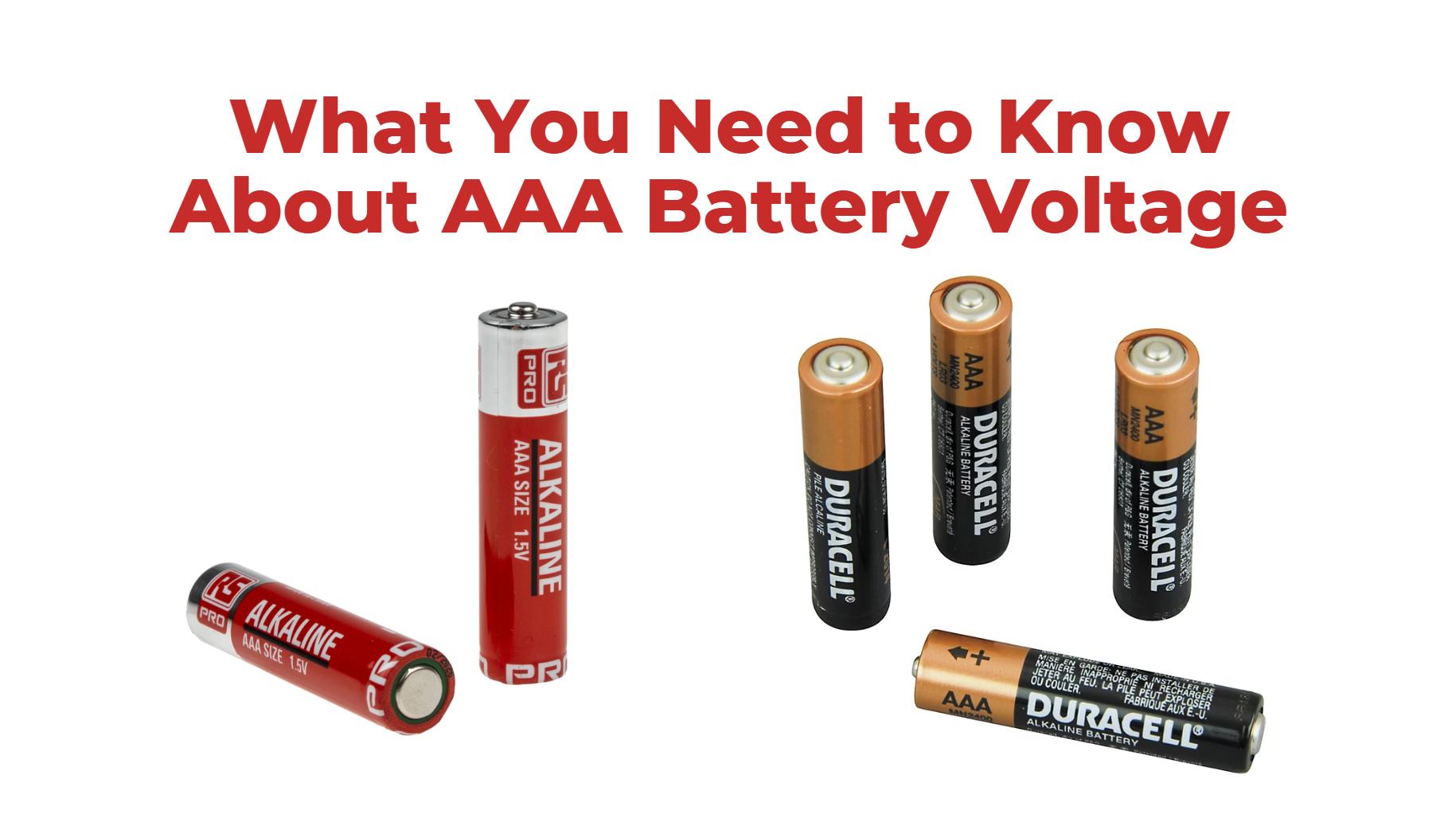AAA batteries typically have a nominal voltage of 1.5 volts for alkaline types and approximately 1.2 volts for rechargeable nickel-metal hydride (NiMH) batteries. Understanding the voltage characteristics of AAA batteries is essential for ensuring optimal performance in devices, as it directly impacts how well they operate under various loads.
Introduction to AAA Battery Voltage
AAA batteries are one of the most commonly used battery sizes in household devices, including remote controls, toys, and flashlights. Knowing their voltage ratings is crucial for selecting the right battery for your devices and ensuring they function correctly.
What is AAA Battery Voltage?
AAA battery voltage refers to the electrical potential difference that drives current through a circuit when the battery is connected to a device. The nominal voltage indicates the average voltage a battery can deliver during its discharge cycle.
Wholesale lithium golf cart batteries with 10-year life? Check here.
| Type of Battery | Nominal Voltage | Typical Use |
|---|---|---|
| Alkaline | 1.5V | General household devices |
| NiMH (Rechargeable) | 1.2V | Rechargeable applications |
| Lithium | 1.5V | High-performance devices |
Understanding these voltage levels helps users choose the appropriate battery type for their needs.
Types of AAA Batteries and Their Voltages
There are several types of AAA batteries, each with different voltage characteristics:
Want OEM lithium forklift batteries at wholesale prices? Check here.
- Alkaline Batteries:
- Nominal voltage: 1.5V
- Widely used in everyday devices due to their long shelf life.
- Nickel-Metal Hydride (NiMH) Batteries:
- Nominal voltage: 1.2V
- Rechargeable option, ideal for high-drain devices.
- Lithium Batteries:
- Nominal voltage: 1.5V
- Known for their lightweight design and ability to operate in extreme temperatures.
| Type | Nominal Voltage | Advantages |
|---|---|---|
| Alkaline | 1.5V | Long shelf life |
| NiMH | 1.2V | Rechargeable, good for high-drain use |
| Lithium | 1.5V | Lightweight, stable performance |
These differences influence the choice of battery based on specific device requirements.
How Voltage Affects Battery Performance
The voltage of a battery directly impacts its performance in several ways:
- Power Output: Higher voltage generally means more power available to the device.
- Discharge Rate: As batteries discharge, their voltage decreases; devices may not function properly if the voltage drops below a certain threshold.
- Compatibility: Many devices are designed to operate within specific voltage ranges; using the wrong type can lead to malfunctions or damage.
Understanding how voltage affects performance helps users make informed decisions about battery selection.
Common Uses for AAA Batteries
AAA batteries are used in a variety of applications:
- Remote Controls: For TVs, gaming consoles, and other electronics.
- Toys: Many battery-operated toys utilize AAA batteries for power.
- Flashlights: Portable lighting solutions often rely on this size for convenience.
- Medical Devices: Some medical equipment uses AAA batteries due to their compact size.
These common applications highlight the versatility of AAA batteries in everyday life.
Voltage Ratings and Their Importance
Voltage ratings are critical when selecting batteries:
- Devices designed for alkaline batteries typically require a nominal voltage of 1.5V.
- Rechargeable devices may be optimized for NiMH batteries with a nominal voltage of 1.2V.
Using the correct battery type ensures that devices operate efficiently without risk of damage or failure.
How to Measure AAA Battery Voltage
Measuring the voltage of your AAA battery can help determine its condition:
Tools Needed for Measuring Voltage
- Digital Multimeter: A versatile tool that can measure various electrical parameters, including voltage.
Step-by-Step Guide to Testing Battery Voltage
- Set your multimeter to measure DC voltage.
- Insert the red probe into the positive terminal (the button end) of the battery.
- Insert the black probe into the negative terminal (the flat end).
- Read the display on the multimeter; this will show you the current voltage of your battery.
| Step | Action |
|---|---|
| 1 | Set multimeter to DC voltage |
| 2 | Connect red probe to positive terminal |
| 3 | Connect black probe to negative terminal |
| 4 | Read displayed voltage |
This simple process allows you to assess whether your battery is still functional or needs replacement.
Interpreting Your Measurement Results
After measuring, it’s essential to interpret your results correctly:
- A reading above 1.3V indicates a good alkaline battery.
- A reading between 1.2V and 1.3V suggests that the battery is still usable but nearing depletion.
- Readings below 1V indicate that the battery should be replaced.
Understanding these readings helps ensure that you only use batteries that provide adequate power for your devices.

Battery Tester
Latest News on Battery Technology
As of November 2024, advancements in battery technology continue to evolve, focusing on improving energy density and sustainability across various applications, including consumer electronics and electric vehicles. Innovations in lithium-ion technology are leading to lighter, more efficient batteries with longer lifespans, while new recycling methods aim to reduce environmental impact.
Redway Expert Comment
Understanding the specifications and performance characteristics of different types of AAA batteries is crucial,” says an expert from Redway Battery Solutions. “Choosing the right battery not only enhances device performance but also ensures safety and longevity.”
Frequently Asked Questions (FAQs)
What is the nominal voltage of an alkaline AAA battery?
The nominal voltage of an alkaline AAA battery is typically 1.5 volts.
How does a rechargeable NiMH AAA battery differ from an alkaline one?
A rechargeable NiMH AAA battery has a nominal voltage of 1.2 volts, which may affect performance in devices designed specifically for higher voltages.
Can I mix different types of AAA batteries in my device?
It is not recommended to mix different types or brands of batteries as this can lead to leakage or reduced performance.
How can I tell if my AAA battery is still good?
Use a multimeter; if it reads above 1.3 volts for alkaline types or above 1 volt for NiMH types, it’s still usable.
Know more:
gyll batteries
gyll lithium battery
gyll battery






